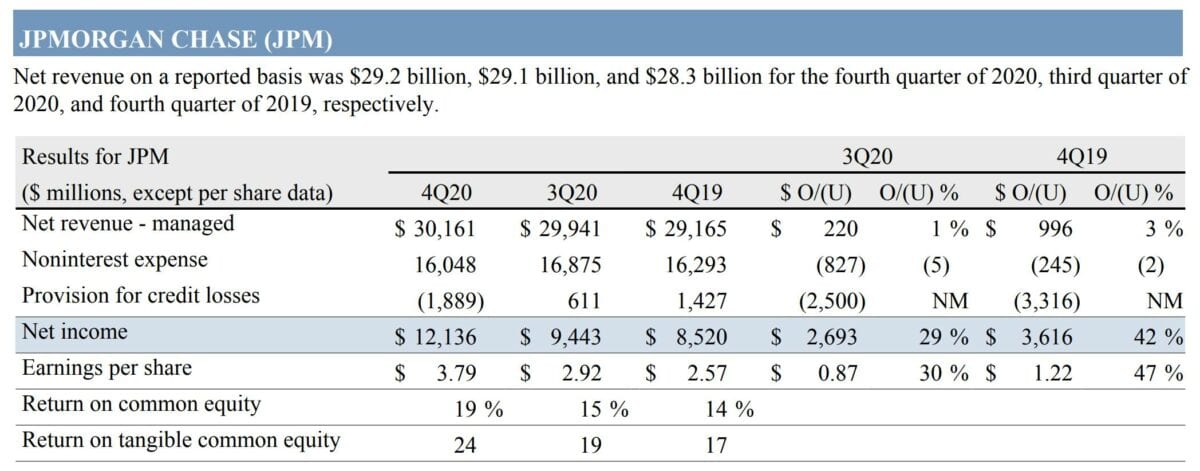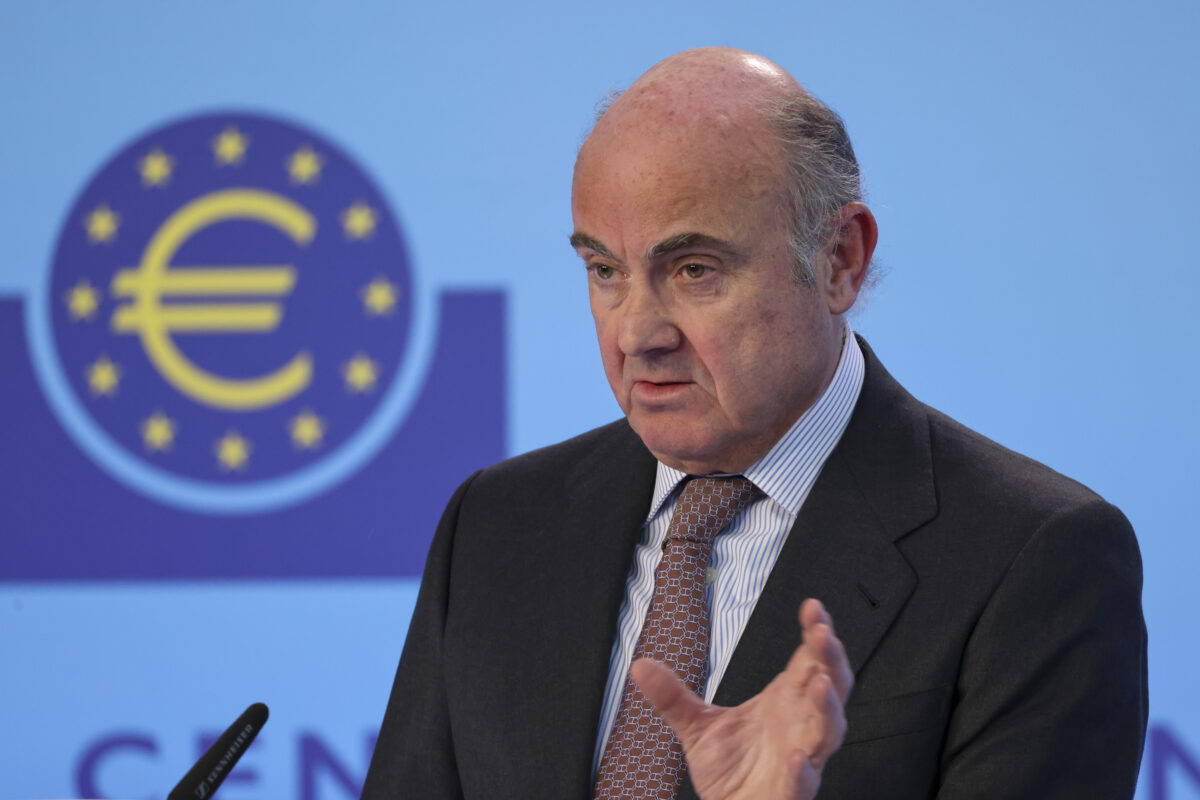Soeben wurden JP Morgan-Quartalszahlen veröffentlicht. Hier die wichtigsten Kennzahlen. Der Umsatz liegt bei 30,16 Milliarden Dollar (Vorjahresquartal 29,2/Erwartungen 28,7). Der Gewinn liegt bei 3,79 Dollar pro Aktie (Vorjahresquartal 2,57/Erwartungen 2,62).
In der Grafik unten sieht man es in der dritten Spalte. JP Morgan hat im letzten Quartal die Risikofürsorge für faule Kredite um 1,9 Milliarden Dollar reduziert, wodurch natürlich der Gewinn erhöht wird. JPM ist der Meinung, dass sich das wirtschaftliche Umfeld (im Sinne der Zahlungsmoral der Kunden) bessert, und vor allem dass Firmenkunden nach wie vor frisches Geld am Kapitalmarkt aufnehmen können. Insgesamt spricht die Bank davon, dass sogar 2,9 Milliarden Dollar an Kreditreserven umgewandelt und in den Gewinn von 12,1 Milliarden Dollar verschoben wurden. Ohne diese Buchung wären es nicht 3,79, sondern nur 3,09 Dollar Gewinn pro Aktie, so die Headline-Aussage der Bank.
Zitat aus dem aktuellen Bericht von JPM:
The provision for credit losses was a net benefit of $1.9 billion, compared to an expense of $1.4 billion in the prior year driven by reserve releases in the current quarter. The Wholesale reserve release was $2.0 billion, reflecting an improvement in the macro-economic scenarios and the continued ability of clients to access liquidity and capital markets. The Consumer reserve release was $0.9 billion, in Home Lending, primarily due to improvements in HPI expectations and portfolio run-off. The prior year included a net reserve release in the Consumer portfolio and a net reserve build in the Wholesale portfolio. Net charge-offs of $1.1 billion were down $444 million from the prior year, driven by Card.
Die Aktie notiert vorbörslich mit +0,7 Prozent.
Hier das Headline-Statement von JPM-CEO Jamie Dimon:
Jamie Dimon, Chairman and CEO, commented on the financial results: “JPMorgan Chase reported strong results in the fourth quarter of 2020, concluding a challenging year where we generated record revenue, benefiting from our diversified business model and dedicated employees. While we reported record profits of $12.1 billion, we do not consider the reserve takedown of $2.9 billion to represent core or recurring profits – essentially reserve calculations, while done extremely diligently and carefully, now involve multiple, multi-year hypothetical probability-adjusted scenarios, which may or may not occur and which can be expected to introduce quarterly volatility in our reserves. While positive vaccine and stimulus developments contributed to these reserve releases this quarter, our credit reserves of over $30 billion continue to reflect significant near-term economic uncertainty and will allow us to withstand an economic environment far worse than the current base forecasts by most economists.”
Dimon added: “In Consumer & Community Banking, deposits grew 30% or over $200 billion driven primarily by growth in the Federal Reserve’s balance sheet and the continuation of modest market share gains. Within our consumer lending franchise, auto and retail mortgage originations were both up more than 20%. Consumer spending continued to recover, as reflected in combined debit and credit card spend being up for the full quarter. The Corporate & Investment Bank delivered another impressive quarter with growth in Global Investment Banking fees of 34% and Markets revenue of 20%. With a record quarter, Commercial Banking earned $3.3 billion of investment banking revenue in 2020, surpassing its previous $3 billion long-term target. In Asset & Wealth Management, AUM grew 17% due to higher asset values and net inflows of over $190 billion into long-term and liquidity products over the last twelve months.”
Dimon concluded: “We ended the year with a CET1 ratio of 13.1% (vs. 12.4% at the beginning of the year) and capital above $200 billion, providing us with meaningful capacity to further invest in our business and communities, while returning capital to
our shareholders. This increase in capital was after raising over $2 trillion of credit and capital for our consumer and institutional clients around the world, which includes nonprofits and U.S. government entities, including states, municipalities, hospitals and universities and adding net $12 billion to credit reserves. We also hold $1.4 trillion of cash and marketable securities, which is currently over $450 billion in excess of what is required. We opened branches in new markets, improved our digital capabilities, and made acquisitions that will enhance our product offerings and deepen our engagement with our customers. We also continued to invest in our communities – for example, through our initial commitments to support those most impacted by the pandemic and our longer-term commitment to advance racial equality and promote economic growth. Our earnings power and healthy capital position also provide us the flexibility to pay dividends and return excess capital to shareholders through share repurchases. I want to end by thanking our frontline colleagues and those working from home who quickly adapted to the pandemic and safely helped our clients, customers, communities and governments.”

Jamie Dimon. Foto: Steve Jurvetson Creative Commons Attribution 2.0
Kommentare lesen und schreiben, hier klicken













